This list of 40 plants will do great in the vast majority of ponds. Small ponds, big ponds, bog filters and streams.
Growing plants directly in the water column helps remove nutrients caused by fish waste, runoff and decomposing leaves.
Water plants provide shelter for small fish, frogs and insects.
Plants naturalise the pond, making it feel like its always been there.
This list includes a diverse range of plants that are readily available for backyard ponds.
For best results select one or two from each category group to develop a beautiful natural ecosystem.
From flowering water plants to edible plants the possibilities of what you can grow in a pond might surprise and excite you.
Note: All plants have the potential to be weeds if planted outside their natural environment, so take care and select plants that are suitable to your local area.
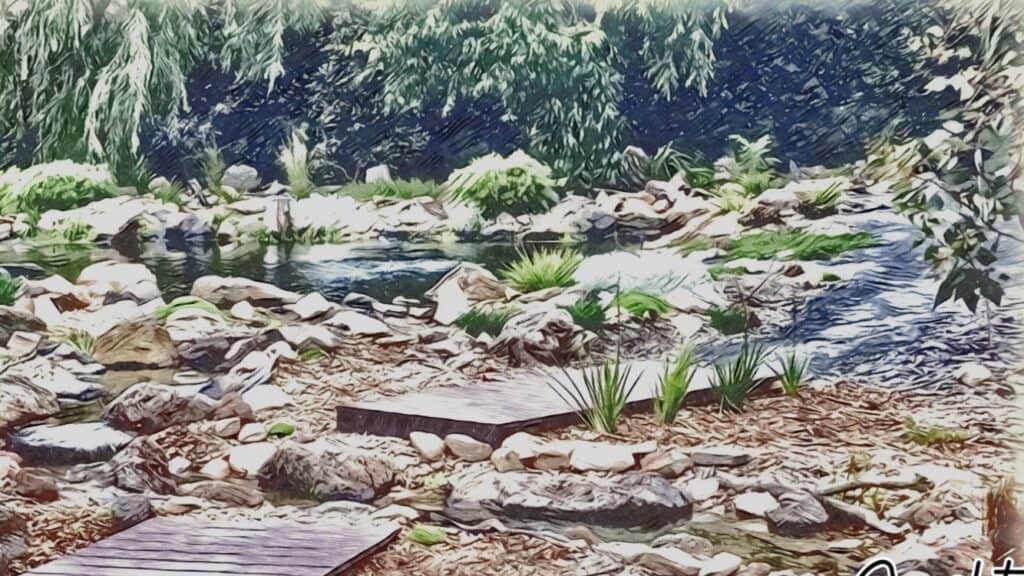
Need help designing your pond? Looking for affordable pond products?
I’ve assembled a list and helpful links to the products I use when building my ponds.
If you want to check it out click the button below.
Submerged ponds plants
Oxygen is vital to optimal water health and quality. Submerged pond plants release oxygen directly into the water.
Baby fish and tadpoles will be forever grateful if you incorporate some submerged plants to give them numerous hiding spots from predators.
Most submerged plants are vigorous growers. Some are highly valued in their native environments and berated as a weeds in others.
Here I’ve listed 5 common submerged plants select one or two that are acceptable to your region.
Eel grass (Vallisneria)
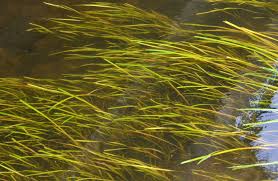
Eel grass is a good common aquarium plant. You’ll will easily find it at any pet store that sells fish.
Its generally nice and cheap at around $10 a bunch.
If your pond has a gravel bottom, eel grass will happily send out runners and create a luscious under water jungle.
If not plant it in a long planter pot and cover with some pebbles.
Eel grass is very easy to grow and maintain. If it becomes to overgrown its very shallow rooted and pulls out really easy.
The leaves grow quite long and will trail on the waters surface this provides some nice shade for the fish and help keep the water cooler.
Milfoil (Myriophyllum)
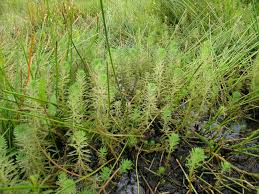
There are many different varieties of milfoil.
Here in Australia we have quite a number that are native and cultivated for use in garden ponds.
I love milfoil and add it to all my ponds.
It as soft feathery foliage and grows nice and fast. The majority of the plant is submerged but around 30% will grow above the waters surface.
Being fast growing it is fantastic at removing nutrients and contaminants from the water.
Of course being fast growing it can become unruly if left untouched so a regular thinning is advised.
Because milfoil has foliage that grows under and above the surface its also a handy plant for around the edges and margins of ponds.
Here it will soften the rock edging and provide plenty of habitat for fish fry and tadpoles.
Milfoil is very easy to propagate simply remove a piece and place in the water.
Hornwort (Ceratophyllum)
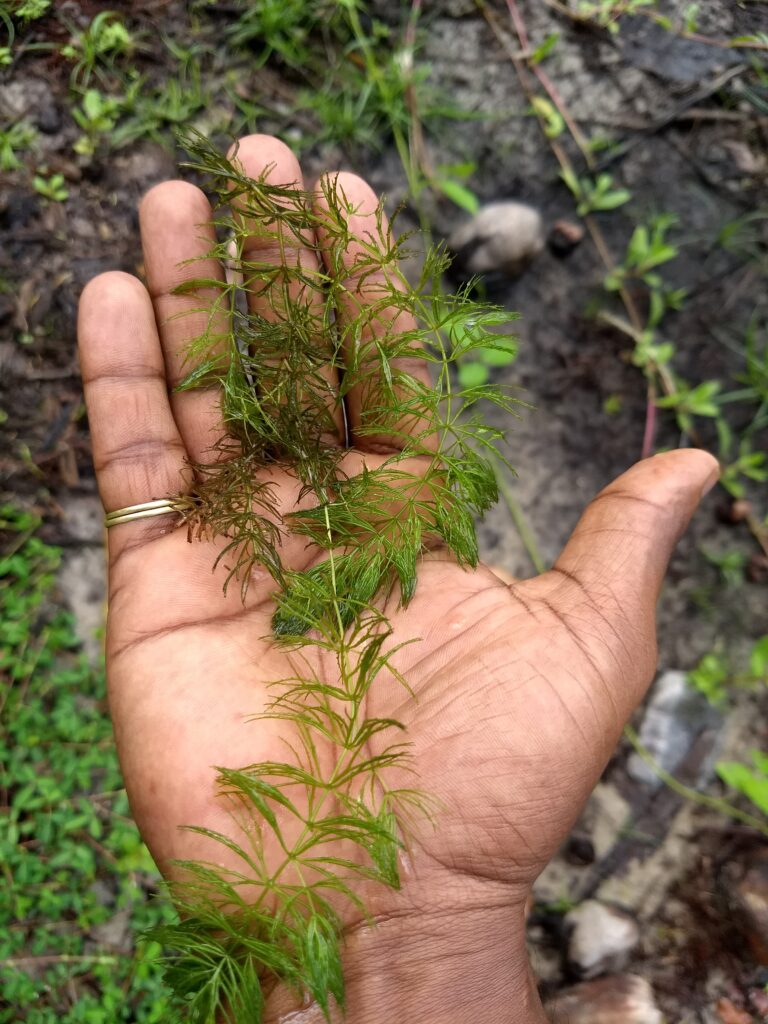
Hornwort is a fantastic oxygenator plant. It’s a bit similar in appearance to milfoil.
However hornwort remains fully submerged.
Hornwort also has no proper root system it simply floats around the pond.
It’s quick growing and provided excellent habitat for spawning fish and their fry.
Hornwort will survive in temperatures as low as 2C (28F), and grow as deep as 2m (7ft).
Hornwort is an excellent choice in ponds with algae problems.
Waterweed (Elodea)
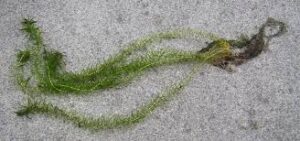
Waterweed his a perfect example of a plant that is an important part of the ecosystem in its native range and considered a weed outside its native area.
Either way if its not declared a weed in your area its a great plant for your pond.
It provides valuable habitat and oxygen.
The plant remains completely submerged apart from the tiny white flowers which bloom on the waters surface.
Like milfoil and hornwort it can be propagated by simply removing a piece and placing in the water.
Water ribbons (Triglochin)
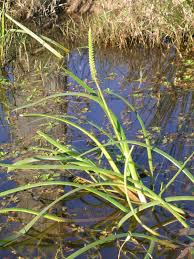
Water ribbons is an Australian native pond plant.
In shallow water the leaves and flower spikes will emerge above the water surface.
In deeper water the leaves till float on the surface in a very similar fashion to eel grass( vallinseria). The flower spikes will still protrude above the surface.
This is a very tough pond plant and can be used around farm ponds as it can survive living outside of water for extended periods.
Like all the previous plants listed it is a great oxygenator.
Probably not very common outside Australia. I love adding it to my ponds.
An excellent plant for attracting frogs.
Ludwigia
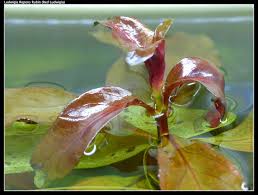
Ludwigia can be used as a submerged plant, floating plant or on the margins of the pond.
It makes an interesting display with its red foliage.
Most ludwigia species are native to the tropical regions so it wont be suited to all zones.
It is commonly available in most aquarium stores. It is cheap and can be planted as an annual in colder climates.
Trailing or small pond plants for the edges
When building a pond you should always incorporate planting pockets for small growing or trailing plants.
Adding plants to the margins of the pond will soften the edges. This creates mystery as the viewer is unsure where the land ends and the water begins.
Small marginal plants like the ones below will help remove nutrients from the water.
This helps keep the water clear, healthy and safe for aquatic life.
Hyssop (Bacopa)
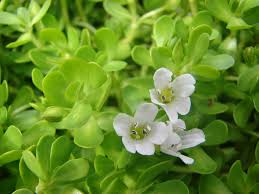
Bacopa or hyssop is one of my go to plants for a pond.
It has a low growing trailing habit. Bacopa can be planted directly into the shallow water on the ponds edge or in the ground.
This makes it a perfect plant for blurring the boundaries of where the pond begins and the land ends.
There are two varieties of bacopa the are commonly used in ponds. Bacopa monnieri and Bacopa caroliniana.
Both have small flowers throughout the warmer months. They are fast growing and perfect addition to the margins of a brand new pond.
Isotoma
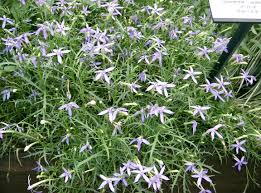
This is another Australian native. Its perfect for the shallow margins of ponds.
Isotoma flowers so profusely I could have easily included it in the flowering pond plant section of this article.
Generally it will flower continuously from mid spring until late autumn. Once flowering has finished for the season it can be cut back hard!
Creeping jenny (Lysimachia)
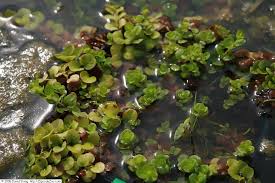
Creeping jenny would have to be one of the most popular pond plants there is… And for good reasons.
This little beauty will grow in a wide variety of climates from cold to tropical.
It looks great, is really tough and readily available.
Creeping jenny grows really really fast making it perfect for ponds that are suffering from too many nutrients.
Like bacopa, creeping jenny can be planted in the shallow pond margins or the soil around the pond.
Little pharaoh (Dwarf Cyperus)
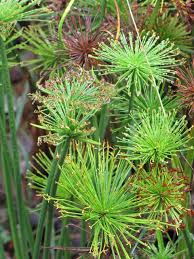
Little pharaoh is a small growing variety of the popular Egyptian papyrus plant.
It only grows to 60cm (2ft). Works well planted in amongst the larger rocks on the waters edge.
When mixed in with some of the trailing plants mentioned above provides a good height contrast on the pond edge.
Can be frost sensitive in really cold climates. I successfully winter ours outdoors we get light frosts throughout winter.
Dwarf sweet flag (Acorus)
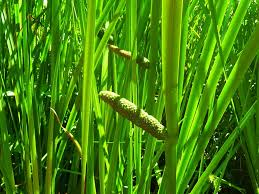
There are quite a few variations of sweet flag available for ponds. From golden foliage, green and variegated.
So far my personal favourite is the dwarf japanese sweet flag. It only grows to about 30cm (1ft).
I like to incorporate it on the margins of small ponds or along the banks of small streams.
A fantastic addition to help soften the rock work.
Blue sedge (Carex)
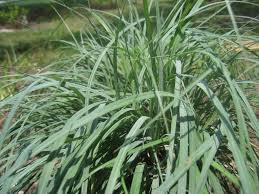
Carex is the botanical name for sedges, so as you can imagine there is a vast variety of carex plants that are well suited for use in a pond.
Blue sedge is my choice simply because i love the blue/grey foliage.
I like to interchange it with the Japanese sweet flag. I find the contest of foliage mixed with the rocks particularly appealing.
Carnivorous plants
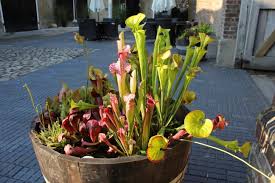
If you want something a little unusual many carnivorous plants will thrive growing right on the pond margins.
Carnivorous plants are incredibly colourful and come in a wide range of shapes and sizes.
Check out the video below for some inspiration.
Plants that are great at cleaning water (perfect for a bog filter)
One of the biggest benefits to adding plants to any pond is that they are natural cleaners.
As the water plants grow they absorb nutrients directly from the water. Without pond plants algae will grow to consume those nutrients.
Heres a few of my favourite water plants that are vigorous enough to do a fantastic job at keeping your pond water crystal clear.
Plant these along with trailing plants and flowering varieties for a nice full looking bog filter.
To fully appreciate the benefits of a bog filter read my article 7 reasons you should add a bog filter to your pond.
Taro or Elephants Ears (Colocasia)
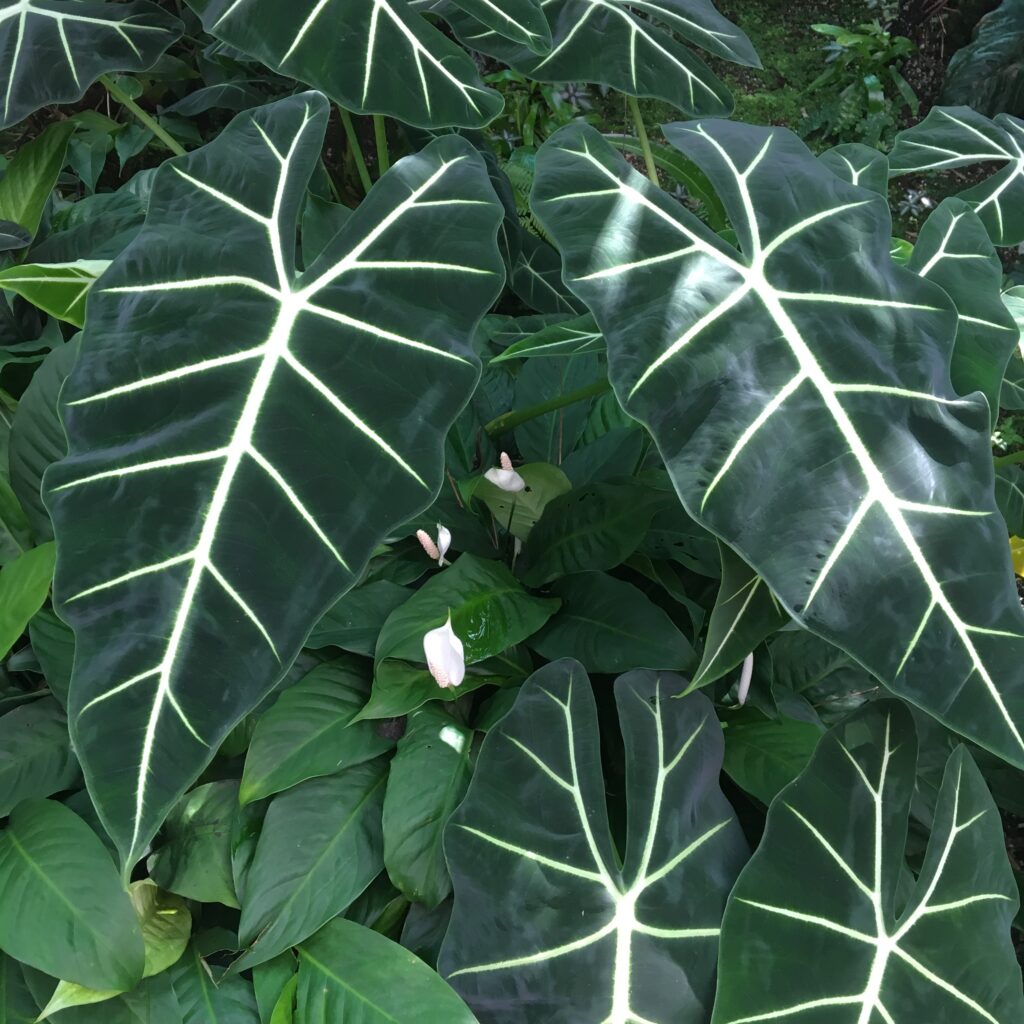
Taro or elephant ears make for a beautiful display in ponds. Those huge leaves in varying colours and textures are amazing.
These are tropical plants and as such are fast growing. The speed at which they grow coupled with the big leaves means they consume large amounts of nutrients.
This makes them a perfect plant for a bog filter, they will remove huge amounts of nutrient from the water.
The only downfall is for those of us in cooler climates they can only be grown as an annual. Even so i feel they are with it!
Canna lily
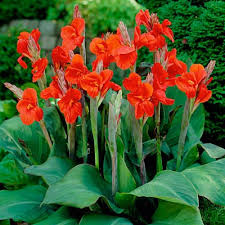
Canna lily’s are another tropical plant that does exceptionally well in bog filters or pond margins.
Like the taro it’s only really active in the warmer weather in cooler climates. But when it’s actively growing new foliage and flowering it is consuming huge amounts of nutrients from the water.
I find that canna’s are hardier than elephant ears. Here our winter temperatures can drop down to -5C (23F) and our canna lily’s come back year after year.
Calla lily (Zantedeschia)

Calla lily’s look quite tropical but will survive the winter outdoors. Some varieties will die down, while others like ‘green goddess’ are evergreen.
Naturally very at home in boggy soils they are a perfect addition to a bog filter. They grow fast and multiply quickly to consume nutrients.
From time to time it’s a good idea to thin out the excess plants.
Tassel Cord rush (Baloskion tetraphllum) (Syn. Restio tetraphyllus)
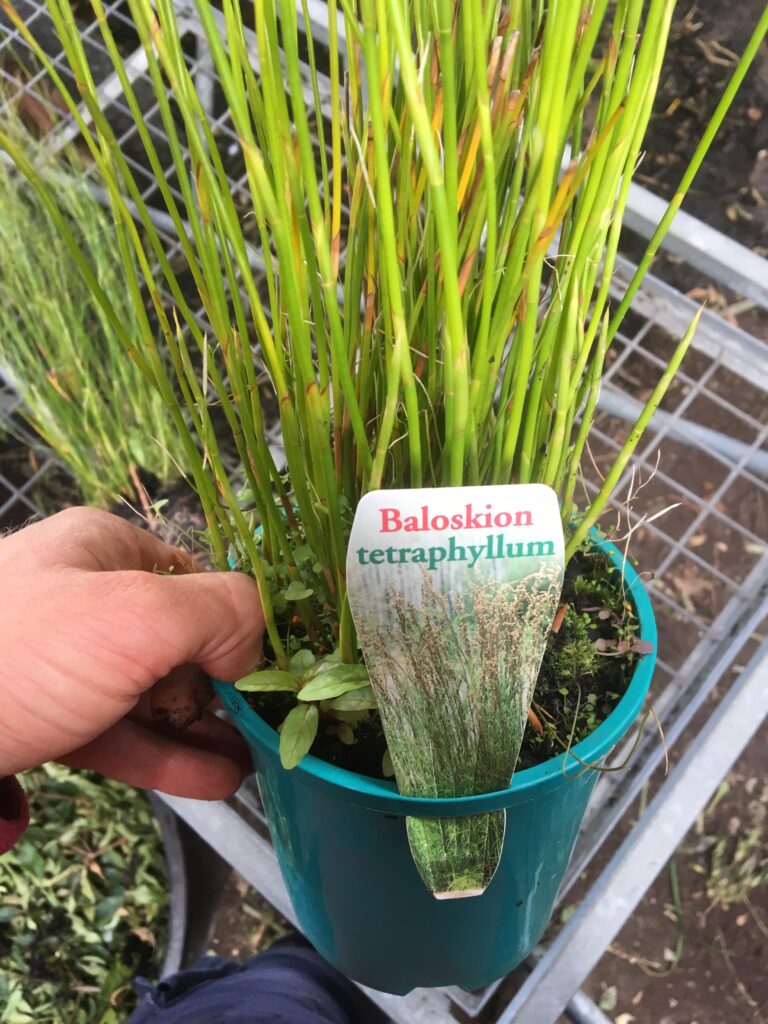
This ones an Aussie native and it’s my go to in bog filters and even along the margins of the pond.
The foliage is is soft and feathery on top. It looks great all year and seems to keep growing throughout.
This means it should be removing nutrients all year.
I also find tassel cord rush isn’t as aggressive as other rushes. So far I’ve not had a problem with it getting out of control.
Umbrella grass (Cyperus)
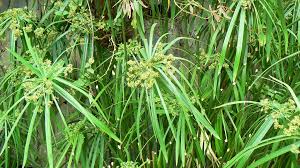
Umbrella plants is an oldie but a goldie!
Has interesting foliage that looks good all year round.
Its a true aquatic plant and has been used in ornamental ponds for many, many years.
A great addition to the bog filter in any pond. Frost hardy. Grows to about 1m (3-4ft).
Japanese blood grass (Imperata)
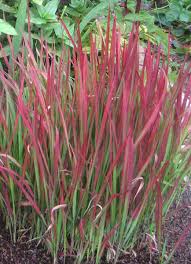
Japanese blood grass displays lovely colour from spring to autumn. It thrives in bog filters.
It adds an interesting colour contrast.
In some areas Japanese blood grass may be considered a pest species.
Corkscrew rush (Juncus)
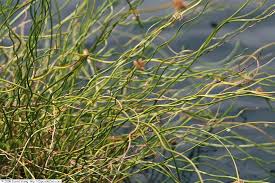
Corkscrew rush is an interesting plant with twisted foliage that is shaped like a corkscrew. Wonder how it got it common name?!
This is a great little plant more suited to smaller bog filters as it docent grow too tall.
Also looks quite nice planted into the edges of streams to add a little hight and soften the rick work.
A great little plant that just plods along all year slowly removing nutrients.
Lizards tail (Saururus)
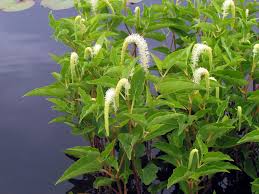
Lizards tail is an excellent choice for larger bog filters. It grows to about 1m (3ft).
Through summer it produces white flowers that have a strong citrus fragrance.
Lizards tail will grow well in shade. It is native to North America.
Japanese Sweet flag (Acorus)
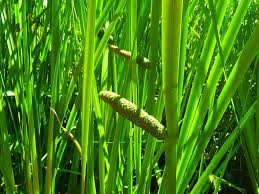
This is the regular sized brother of the dwarf variety i mentioned earlier.
As i alluded to there are many variations available with sweet flag. These larger plants are great for sucking up nutrients.
Mix and match the different foliage colours for a great looking display.
I love that these are evergreen so they are working all year to keep the water clean and healthy.
Floating pond plants
Floating pond plants can be very, very helpful.
They generally grow really fast which makes them perfect for quickly removing nutrients from the water, thus out competing algae.
Their other advantage is that they shade the water. This will keep water temperatures more stable.
Water hawthorn
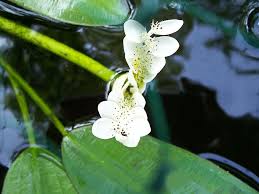
This is an attractive floating plant. It’s not a ‘proper’ floating plant it has a rhizome that is planted in a pot or the bottom of the pond.
The leaves will float on the surface much like a waterlily.
It’s a good plant for shaded ponds. It looks its best through winter which is great cause most other plants aren’t doing much.
the flowers are small but fragrant.
Duckweed
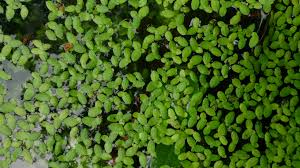
Duckweed gets its name from the way it just appears in a pond, most often brought in by visiting water birds.
Duckweed grows exceptionally fast! It is a useful plant for sucking up nitrate in the water.
To be effective you will need to periodically remove the excess duckweed before it dies and sinks to the bottom of the pond.
If allowed to decompose in the pond it will release all the nutrients back into the pond.
Goldfish and koi will eat duckweed so it wont last long in a pond stocked with either.
Azolla
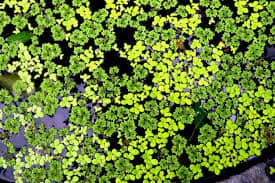
Azolla grows and functions in much the same way as duckweed.
It looks like tiny floating fern fronds. The are many, many different species of azolla. This makes it easy to find some that is native to your area.
Like duckweed the excess needs to be removed.
Water lettuce (Pistia)
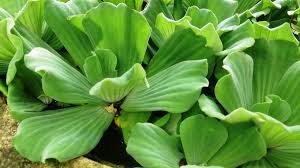
Water lettuce is a floating plant that prefers warmer climates.
In cooler areas it will die away once the first frosts come visit. This is a bit of a blessing as in areas that are frost free this plant can be quite invasive.
Those of us in cooler climates can utilise its vigorous growth throughout the warmer months to shade the water and strip nutrients from the water column.
It also provide great shelter and hiding areas for small fish.
Frogbit
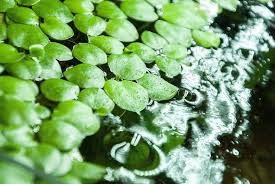
Frogbit can be used in much the same way as azolla or duckweed.
The plant looks like mini lily pads.
It has been a common plant in the aquarium trade for many years.
Water hyacinths
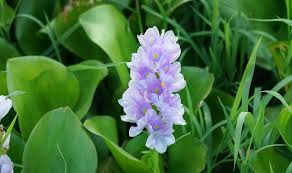
Water hyacinth is native to the Amazon basin. In most jurisdictions it is classed as a weed.
However in cooler climates where it can’t survive the winter it can be grown as an annual much like water lettuce.
It grows incredibly quick which means its consuming large amounts of nutrients from the water.
A great natural filter if you are allowed to grow it in your area.
Pond plants with nice flowers
There are actually quite a lot of water plants that have incredible flowers.
Some of these plants below are not traditional pond plants but nonetheless can be grown directly in the pond or along the margins.
Utilise some of the plants below to add bursts of colour to your water features or ponds.
Water lily
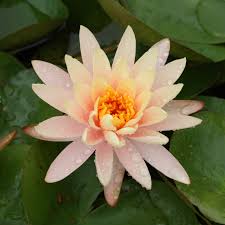
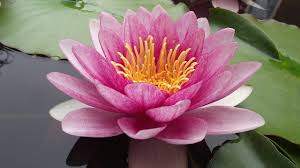
Every pond needs at least one water lily!
The floating foliage provides numerous benefits: keeping water cooler, providing shelter for fish and aquatic animals.
But the flowers….. the flowers are truly spectacular!
Professional growers have been playing around with different strains of water lilies for centuries. The results are the abundance of colours and tones that we now have access to.
Waterlilies can be grown in all climates. In the tropics there are specific tropical varieties and everywhere else can successfully grow the hardy varieties.
Impatiens
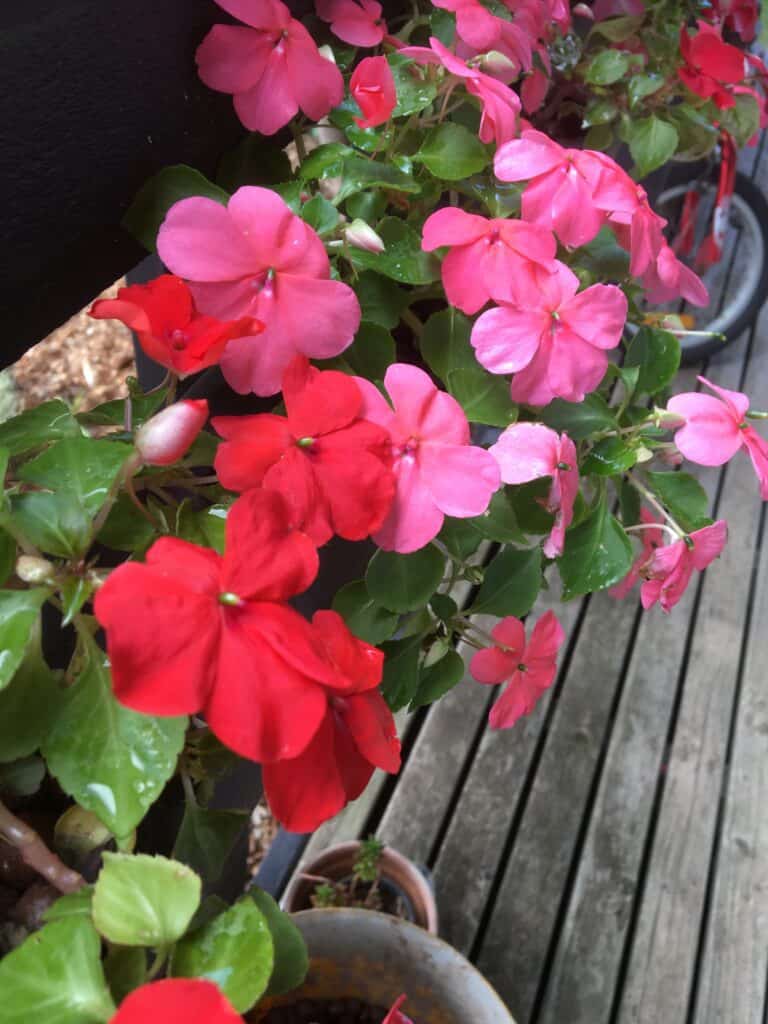
Impatiens are one of those plants that are not traditional pond plants.
But boy do they thrive in water!
The best part is they can be grown in complete shade. Sometimes it can be hard to find plants that will add colour to shaded areas.
The display that impatiens can put on through the warmer months is just brilliant!
A punnet cost a few bucks at the start of spring. An investment well worth it every spring.
Iris

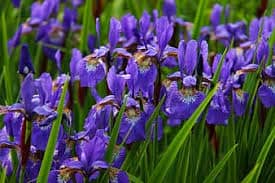
There are hundreds of varieties of iris that will thrive in the margins of a pond.
Most are super tough and will provide tons of colour throughout the warmer months of the year.
Iris are also a great addition to bog and wetland filters, here they will strip out nutrients and provide beautiful pops of colour.
Lotus
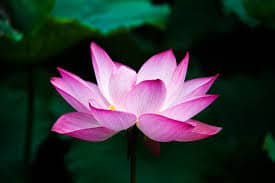
The lotus flower would have to be one of the most iconic and instantly recognised plants in the world.
There are so many variations to choose from.
A lotus can be grown in a small container pond right up to the largest of ponds.
The roots can get quite vigorous so take care if planting out of a pot.
The foliage of a lotus is also quite attractive especially when its raining out, the water is repelled by the leaves. It’s quite mesmerising.
Society Garlic (Tulbaghia)
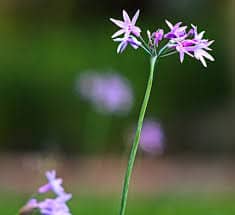
Society garlic produces an abundance of flowers throughout most of the year.
This is a plant that is normally grown in the garden, but will also thrive in shallow water.
I like to add it into bog gardens or wetland filters.
Provided winters aren’t too harsh it will continue growing all year long.
Most commonly available with strappy green leaves, there is also a variegated foliage variation available.
Bog sage (Salvia)
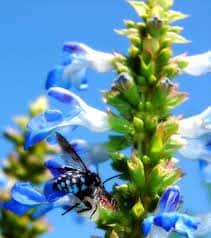
Bog sage produces heaps of small blue flowers on long flower stems.
As the name suggests it thrives in boggy conditions.
The flowers are produced in abundance through the warmer months and bees just love em!
If the flower stems become to leggy simply cut off at ground level and new shoots will emerge.
Another great flowering plant for bog and wetland filters!
Purple loosestrife (Lythrum)
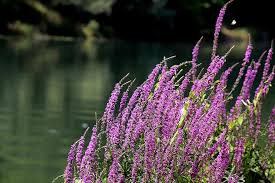
These plants are native to most continents including here in Australia.
Purple loosestrife puts on a striking display of flowers in mass throughout summer.
In autumn the foliage begins to redden and then eventually it dies back.
During winter it can be cut down to ground level, it will reshoot in spring.
Edible plants that can be grown in ponds
Theres actually many plants that are commonly grown in vegetable gardens that can adapt and grow directly in water.
Aquaponic systems are growing in popularity. These plants will also perform very well in a bog or wetland filter.
Heres some great plants that will thrive in your pond and you can eat!
Winner, winner, some plants from the pond for dinner.
Mint

Mint has got to be one of the easiest plants to grow.
To propagate just place a piece in a glass of water and watch the roots emerge in a week or so.
Mint loves water and there are many different varieties that can be grown.
Some have quite interesting foliage.
I like to grow mint in small bog filters on my wine barrel patio ponds.
The vigorous growth of mint insures that heaps of nutrients are being removed from the water.
Best of all any time i need some mint its right there on the verandah.
Water parsley
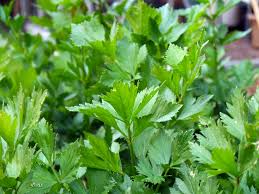
This is another great edible plant for small bog filters.
Water parsley is a good source of vitamins A, C and K. A good addition to any salad.
There is a variation known as rainbow water parsley which has quite unique multi-coloured foliage.
Strawberries
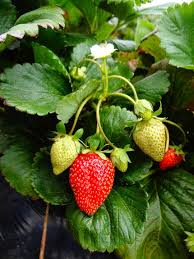
Strawberries are a really fun plant to grow in the margins of the pond.
The plant can thrive with wet feet just ensure the foliage isn’t submerged.
Ive that its best to remove them from the water when they go dominant. If you leave them in the pond during dormancy most of the plants will rot.
Lettuce

Lettuce for me is another really handy plant for the bog filter. They grow really fast making them perfect for consuming excess nutrients.
There are lots of other leafy greens that will also do really well with submerged roots: Kale and baby spinach to name a couple.
Water cress

Another herb. This one can also be used in small bog filters.
Quick growing and great little addition to salads.
Water chestnut
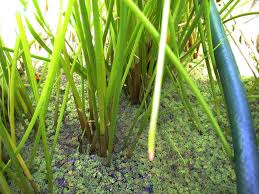
Water chestnuts are a popular addition to Asian inspired cuisine.
The plant itself is quite vigorous and will reach around 1m(3+ft). It requires a reasonable amount of depth to form edible tubers (they aren’t actually a nut).
It’s a good addition for medium to large bog filters or the margins of larger ponds.
Subscribe
Hopefully this article has given you some ideas of plants that you could use in your own pond.
Remember not all are suitable to all regions. Many aquatic plants are cherished in one region and cursed in another.
If you would like to join my mailing list and receive special offers and discounts on pond supplies that would be great.

